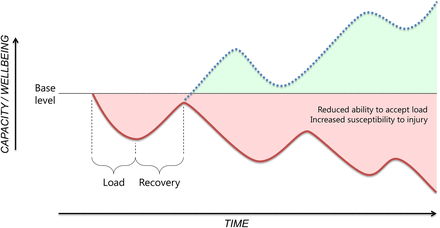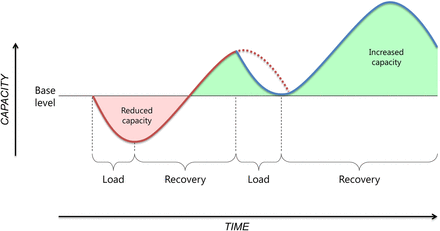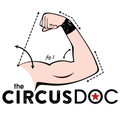This month the International Olympic Committee (IOC) put out a consensus statement about “load management” and its relationship to major risk factors for injury in elite athletes. In my mind, performers are the ultimate athletes able to combine strength, grace, control, flexibility, artistic prowess, and explosive power all while managing performances, training, and the stresses (and joys) that come from creating art.
What is this load that the IOC is concerned about? Load, in summary of the IOC, is the combination of all sources of pressure on you comprised of those directly from your sport and those from outside your sport, including physiological, psychological, or mechanical stressors (ie lack of sleep, a busy schedule, preparing for a show, or going for a hard hike). These factors are considered over the short term (one training session or performance) and long term (months or years) and the variable magnitude of the factors (ie duration, frequency, and intensity).
When load is managed properly, for every episode or factor of load you must fully recover to prevent becoming more susceptible to injury. Recovery allows the body to repair any damage to the muscles and other tissues allowing them to heal from the stresses on them and rebuild even stronger to withstand the increased load demands, You use this period to recover from fatigue and to replenish nutrients to be ready to train or perform again. Without complete recovery, you may have more difficulty recovering and become at risk for injury or illness. This tends to occur with rapid increases in load due to your training and performing habits or non-sport factors that are impeding your recovery from your normal training schedule.

However, if you are fully recovering, you will be undergoing adaptations that will allow your body to handle that same load more easily in the future, increasing your baseline, and decreasing recovery time. You will be in a great position to increase your capacity for whatever your goals may be (strength, endurance, flexibility, etc).

So what does this mean for you? Your training regimen, and non-circus related stressors, are something you should closely monitor and increase or change in a controlled manner. Your sleep (or lack there of), stress, nutrition, or mental state could put you at higher risk of injury or decreased ability to recover. You need to pay attention to the intensity, duration, and frequency of your training (or performing). For example, if you are getting ready for a performance, now is not the time to go from training three times a week to training daily, or up the intensity by trying to learn that last new trick, or to stay at the gym for hours. What I recommend is only changing one factor at a time, giving your body time to adjust to the new load before changing the next.
What the IOC found in its review of the literature is that small increases (and decreases) are significantly better than large fluctuations in loading. Through small changes and gradual controlled loading, you can reach high loads of physically hard training and it will have a protective effect from injuries. The sustained loads over time allow you body to adapt to performing incredible feats!
Get out there and get on a training plan. You will be incredible.
For more information and resources check out the full articles below from the British Journal of Sports Medicine
Part One
Part Two
